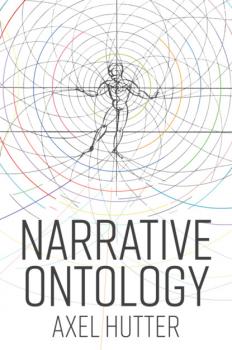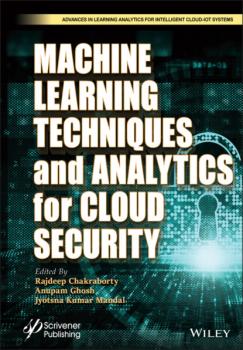John Wiley & Sons Limited
Все книги издательства John Wiley & Sons LimitedControversy Mapping
As disputes concerning the environment, the economy, and pandemics occupy public debate, we need to learn to navigate matters of public concern when facts are in doubt and expertise is contested. Controversy Mapping is the first book to introduce readers to the observation and representation of contested issues on digital media. Drawing on actor-network theory and digital methods, Venturini and Munk outline the conceptual underpinnings and the many tools and techniques of controversy mapping. They review its history in science and technology studies, discuss its methodological potential, and unfold its political implications. Through a range of cases and examples, they demonstrate how to chart actors and issues using digital fieldwork and computational techniques. A preface by Richard Rogers and an interview with Bruno Latour are also included. A crucial field guide and hands-on companion for the digital age, Controversy Mapping is an indispensable resource for students and scholars of media and communication, as well as activists, journalists, citizens, and decision makers.
Innovation in Clusters
Forged at the heart of international political bodies by expert researchers, the innovation cluster concept has been incorporated into most public policies in industrialized countries. Based largely on the ideas behind the success of Silicon Valley, several imitative attempts have been made to geographically group laboratories, companies and training in particular fields in order to generate “synergies” between science and industry. <br />In its first part, Innovation in Clusters analyzes the infatuation with the system of clusters that is integral to innovative policies by analyzing its socio historical context, its revival in management and its worldwide expansion, looking at a French example at a local level. In its second part, the book explores a specialized biotechnology cluster dating back to the end of the 1990s. The sociological survey conducted twenty years later sheds a different light on the dynamics and relationships between laboratories and companies, contradicting the commonly held belief that innovation is made possible by geographical proximity.
Physikalische Chemie
Das unverzichtbare, umfassende Lehrbuch der Physikalischen Chemie!<br> <br> Der «große Atkins» ist und bleibt ein Muss für alle Studierenden, die sich ernsthaft mit der Physikalischen Chemie auseinandersetzen. In unverwechselbarem Stil deckt Peter Atkins mit seinen Koautoren Julio de Paula und James Keeler die gesamte Bandbreite dieses faszinierenden und herausfordernden Fachs ab.<br> <br> In der neuen, sechsten Auflage ist der Inhalt modular aufbereitet, um so das Lernen noch strukturierter und zielgerichteter gestalten zu können. Wie immer beim «Atkins» gehen Anschaulichkeit und mathematische Durchdringung des Stoffes Hand in Hand. Und natürlich kommt der Bezug zu den Anwendungen der Physikalischen Chemie und ihrer Bedeutung für andere Fachgebiete nie zu kurz.<br> <br> * Jeder Abschnitt stellt explizit Motivation, Schlüsselideen und Voraussetzungen heraus<br> * Durchgerechnete Beispiele, Selbsttests und Zusammenfassungen der Schlüsselkonzepte erleichtern Lernen und Wiederholen<br> * Kästen mit Hinweisen zur korrekten Verwendung von Fachsprache und chemischer Konzepte helfen dabei, typische Fehler und Fehlvorstellungen zu vermeiden<br> * Herleitungen von Gleichungen erfolgen in separaten Toolkits, um das Nachschlagen und Nachvollziehen zu erleichtern<br> * Diskussionsfragen, leichte Aufgaben, schwerere Aufgaben, und abschnittsübergreifende Aufgaben in umfangreichen Übungsteilen an den Abschnittsenden<br> * Das Arbeitsbuch ist separat erhältlich und mit dem Lehrbuch im Set<br> <br> Zusatzmaterial für Dozentinnen und Dozenten erhältlich unter www.wiley-vch.de/textbooks<br>
Change Detection and Image Time Series Analysis 2
Change Detection and Image Time Series Analysis 2 presents supervised machine-learning-based methods for temporal evolution analysis by using image time series associated with Earth observation data. Chapter 1 addresses the fusion of multisensor, multiresolution and multitemporal data. It proposes two supervised solutions that are based on a Markov random field: the first relies on a quad-tree and the second is specifically designed to deal with multimission, multifrequency and multiresolution time series.Chapter 2 provides an overview of pixel based methods for time series classification, from the earliest shallow learning methods to the most recent deep-learning-based approaches.Chapter 3 focuses on very high spatial resolution data time series and on the use of semantic information for modeling spatio-temporal evolution patterns.Chapter 4 centers on the challenges of dense time series analysis, including pre processing aspects and a taxonomy of existing methodologies. Finally, since the evaluation of a learning system can be subject to multiple considerations,Chapters 5 and 6 offer extensive evaluations of the methodologies and learning frameworks used to produce change maps, in the context of multiclass and/or multilabel change classification issues.
Segregation
Segregation is one of the starkest social realities of contemporary societies. Though often associated with explicitly racist laws of the past, it is a phenomenon that persists to this day and is a crucial element for understanding group relations and the wellbeing of different populations in society. In this book, Eric Fong and Kumiko Shibuya provide a thorough discussion of the evolving complexity of segregation in all its variety and variations. The authors focus not only on past trends and the development of segregation measures, but also the current state of affairs, and demonstrate the connections between the segregation of racial/ethnic groups, immigrant communities, and schools, along with poverty concentration. By taking a wide, cross-cutting view, the authors identify commonalities and differences in the causes, mechanisms, and consequences of segregation. Spatial and social segregation together perpetuate and reinforce the unequal distribution of resources among racial and ethnic groups, which in turn can have positive and negative consequences for individuals and groups. This critical overview of segregation will be a valuable and insightful resource for students of sociology, geography, and ethnic studies, as well as those keen to get a handle on this persistent challenge to equal and inclusive societies.









